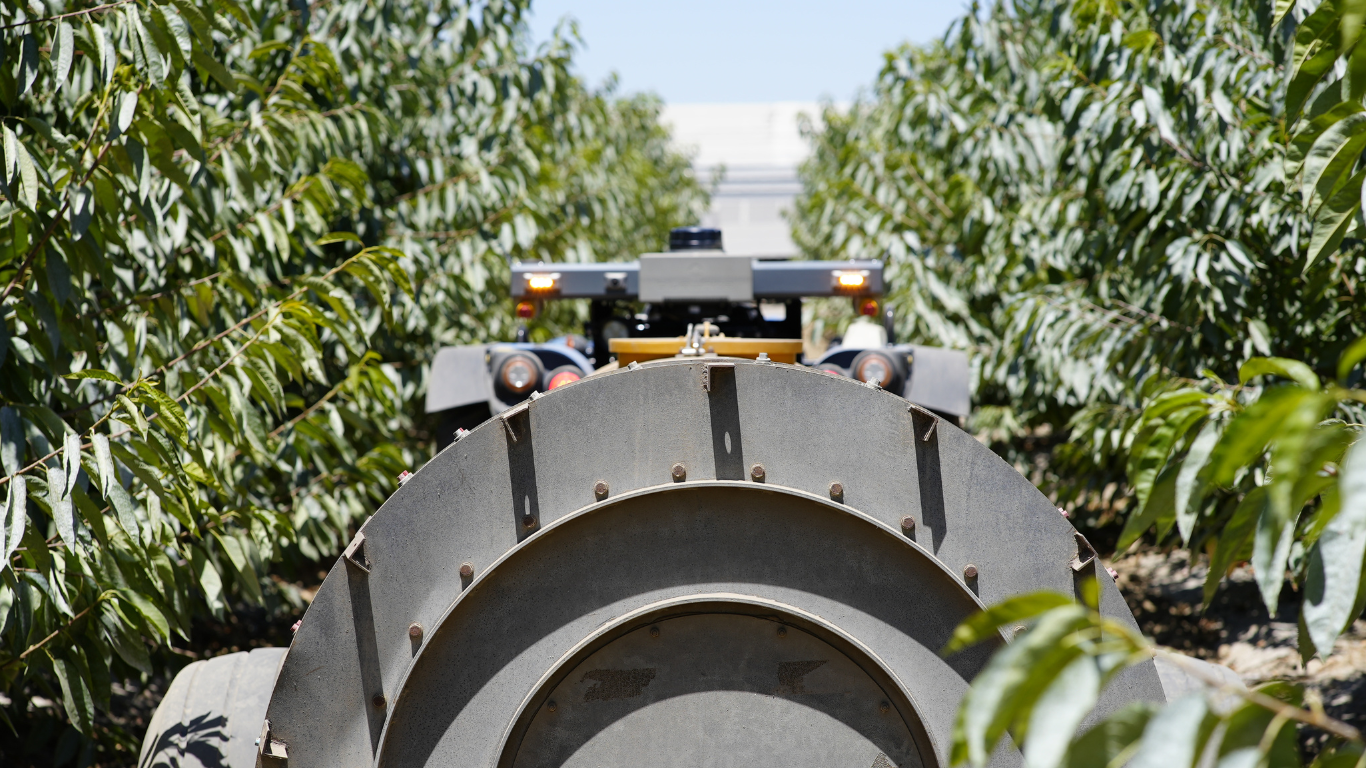Introduction: The New Standard in Spraying
Spraying is one of the most frequent and critical tasks in agriculture, yet it is also one of the most resource-intensive. Traditional spraying methods often result in chemical waste, higher costs, and unnecessary environmental impact. Precision spraying changes that by using advanced sensors, AI-driven control, and accurate navigation to ensure that every droplet is applied exactly where it is needed.
For growers, the benefits are clear: lower chemical costs, improved operational efficiency, and stronger environmental stewardship.
The Cost of Traditional Spraying
In conventional spraying operations, even small inaccuracies can lead to significant waste. Common issues include:
- Overlapping passes that double-apply chemicals
- Drifting spray that misses target plants
- Inconsistent application rates due to changing speed or terrain
These inefficiencies result in higher costs, regulatory compliance challenges, and increased environmental risk.
How Precision Spraying Works
Precision spraying integrates real-time sensing, GPS-guided navigation, and automated application control to optimize every aspect of spraying.
1. Targeted Application
Sensors and AI identify the exact position and coverage area needed for each pass, preventing over- or under-application.
2. Automated Rate Adjustment
The system adjusts spray rates in real time based on plant spacing, canopy structure, and operational speed.
3. Centimeter-Level Accuracy
RTK GPS guidance ensures that coverage is precise, avoiding waste from overlaps or gaps.
Key Benefits of Precision Spraying
Reduced Chemical Costs
Accurate application means fewer wasted inputs, lowering overall chemical expenses.
Improved Sustainability
By minimizing over-application and drift, precision spraying reduces the environmental footprint, helping protect soil and water resources.
Operational Efficiency
Automation eliminates the need for constant manual adjustments, allowing operators to focus on monitoring and oversight rather than repetitive steering and rate control.
Consistent Quality
Every pass delivers the same accuracy and consistency, regardless of operator experience or working conditions.
Bluewhite’s Precision Spraying Solution
Bluewhite integrates precision spraying capabilities directly into its Pathfinder retrofit kit and GEN 4 autonomous system.
Pathfinder Retrofit Kit
Enables existing tractors and sprayers to operate autonomously with precision coverage control.
GEN 4 Autonomous System
Combines LiDAR, cameras, and AI to deliver unmatched navigation and application accuracy.
Compass Fleet Management Platform
Provides real-time monitoring and reporting on spray coverage, chemical use, and operational performance.
Example: Cost and Resource Savings
A permanent crop grower implemented Bluewhite’s autonomous precision spraying system and saw a measurable reduction in chemical usage across the season. Lower input costs combined with reduced labor needs resulted in significant operational savings.
FAQs: Precision Spraying Benefits
Q: Can I retrofit my current sprayer for precision spraying?
Yes. Bluewhite’s Pathfinder kit is designed to integrate with existing tractors and sprayers.
Q: Does precision spraying work in all crop types?
It is adaptable to a wide range of permanent crops and various field conditions.
Q: How does it help with compliance?
Accurate application records support regulatory compliance and sustainability certifications.
Conclusion: A Smarter Way to Spray
Precision spraying helps growers save money, operate more efficiently, and protect the environment. By combining advanced navigation, AI-driven controls, and accurate application rates, Bluewhite offers a solution that delivers immediate cost savings and long-term sustainability benefits.

